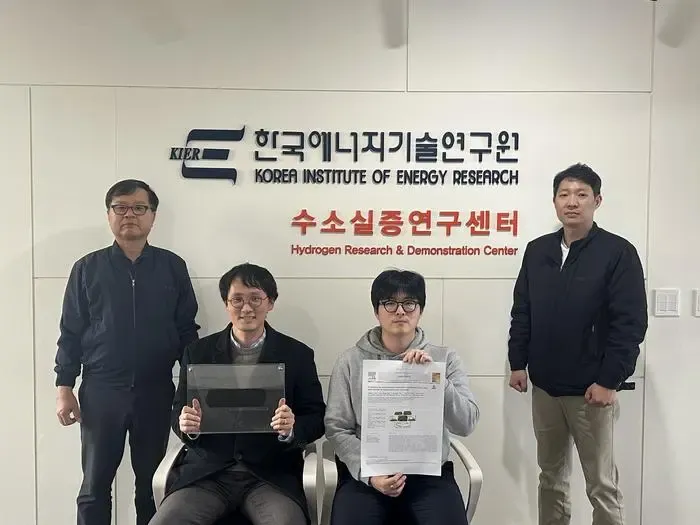AI Revolutionizes Detection of Fuel Cell Failures: Research Findings

Seoul, Dec 31 (NationPress) A team of scientists has introduced a groundbreaking method for examining the microstructure of carbon fibre paper, which is a vital element in hydrogen fuel cells, achieving analysis speeds that are 100 times faster than conventional techniques, all thanks to the integration of digital twin technology and artificial intelligence (AI).
Carbon fibre paper plays a pivotal role in hydrogen fuel cell stacks, facilitating the discharge of water and the supply of fuel. This material comprises components like carbon fibres, binders (adhesives), and coatings.
Dr. Chi-Young Jung's research group from the Hydrogen Research and Demonstration Center at the Korea Institute of Energy Research (KIER) devised a technology that employs X-ray diagnostics combined with an AI-driven image learning model to analyze the microstructure of carbon fibre paper.
Remarkably, this method allows for precise evaluations using solely X-ray tomography, negating the requirement for an electron microscope. This advancement enables nearly real-time condition diagnostics, as reported in the journal Applied Energy.
The research team gathered 5,000 images from over 200 samples of carbon fibre paper and utilized this data to train a machine learning algorithm.
Consequently, the trained algorithm successfully predicted the 3D distribution and arrangement of the primary components of carbon fibre paper — including carbon fibers, binders, and coatings — with an accuracy exceeding 98 percent.
“This research is pivotal as it improves analytical technology through the fusion of AI with virtual space utilization, clearly delineating the connection between the structure and properties of energy materials, thus showcasing its practical use,” stated Dr. Jung.
“We anticipate it will significantly impact related domains such as secondary batteries and water electrolysis in the future,” he added.









